We’ve all been there, dragging the same chair from one corner to the next, wondering why the room still feels “off.” Great home decor isn’t just about what you buy, it’s about where you put it. And when furniture placement is done right, it can instantly make a room feel bigger, calmer, more functional, and effortlessly stylish.
This isn’t the usual “put your couch against the wall” advice. These are high-impact, design-smart placement ideas that actually change the feel of a space.
1. The Floating Rug Frame
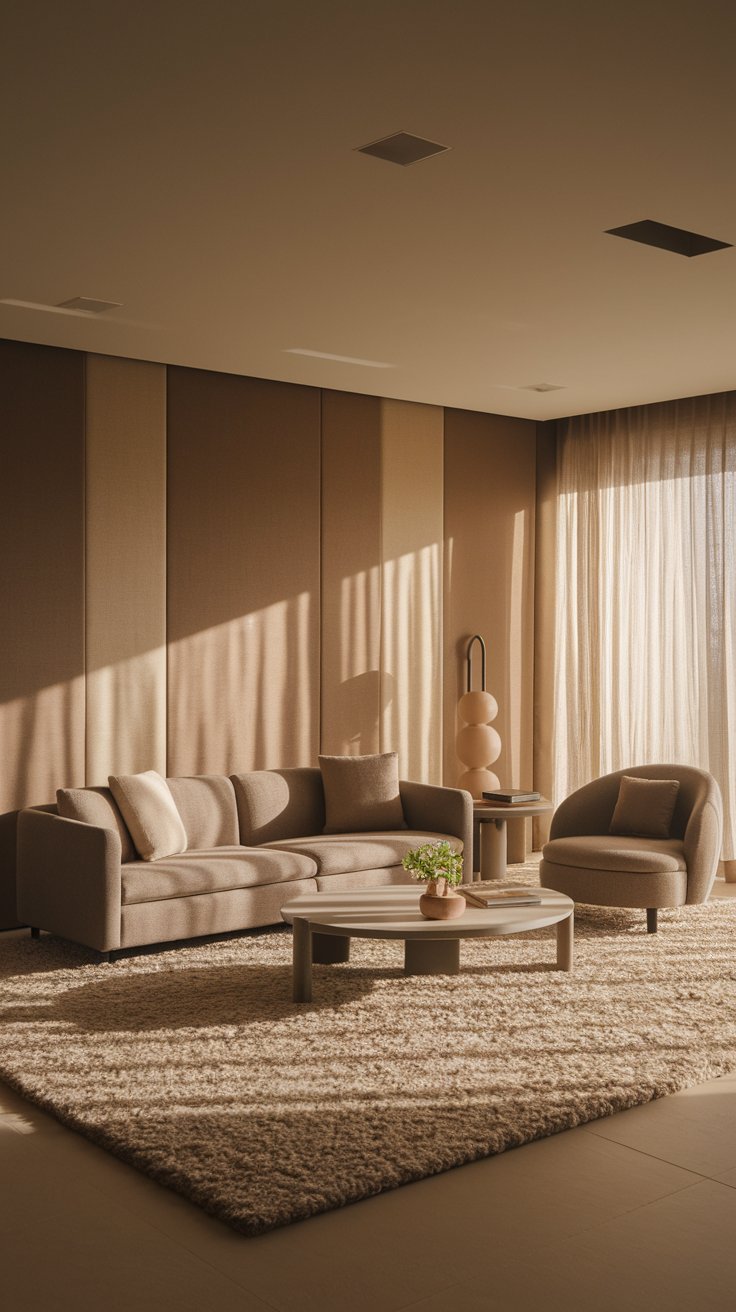
Center your furniture on top of a rug that’s intentionally smaller than the seating area, creating a “frame within a frame” to define the zone without overwhelming the floor.
Why you’ll love it
- Makes small rooms feel more open
- Adds visual layering without blocking walkways
- Turns your rug into a styled focal point
2. The Back-to-Back Conversation Layout
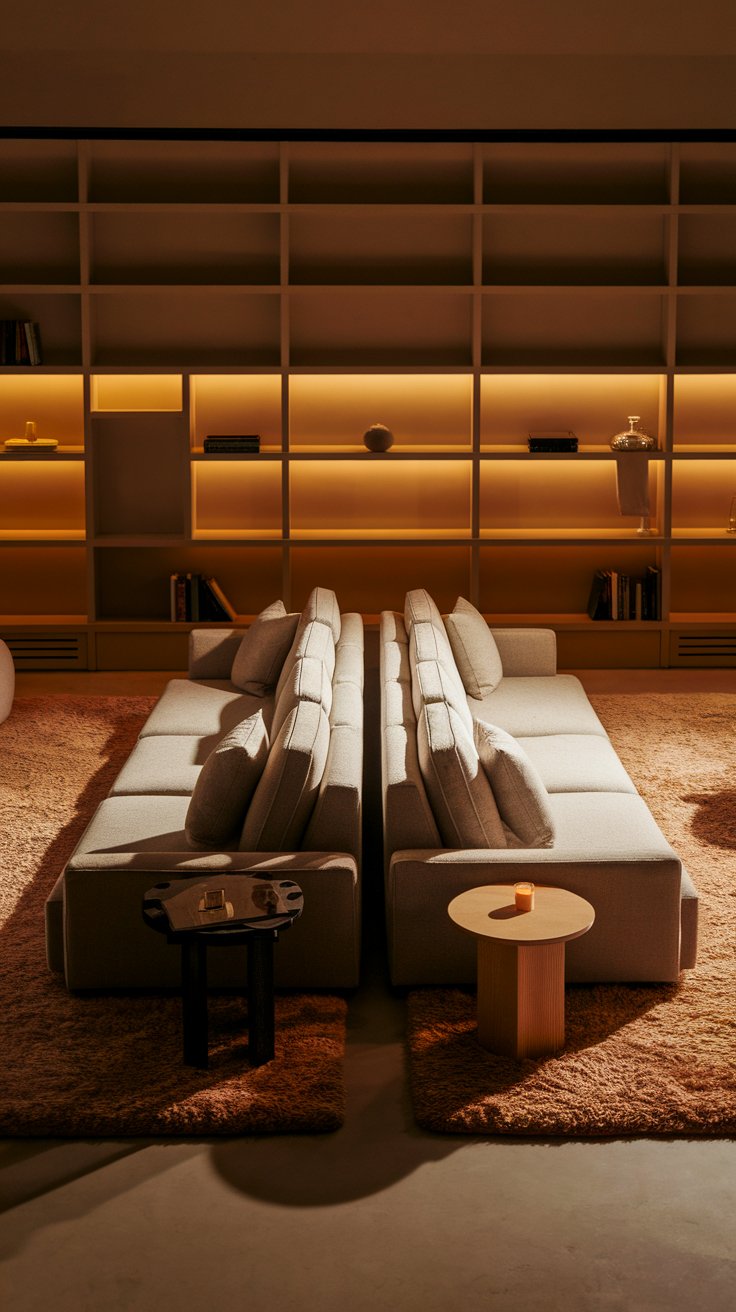
Place two identical sofas (or a sofa and a bench) back-to-back to split a large open space into two separate zones, like lounge and reading, or living and dining.
Why you’ll love it
- No walls required for separation
- Feels intentional and high-end
- Perfect for open concept homes
3. The Perimeter Lounge
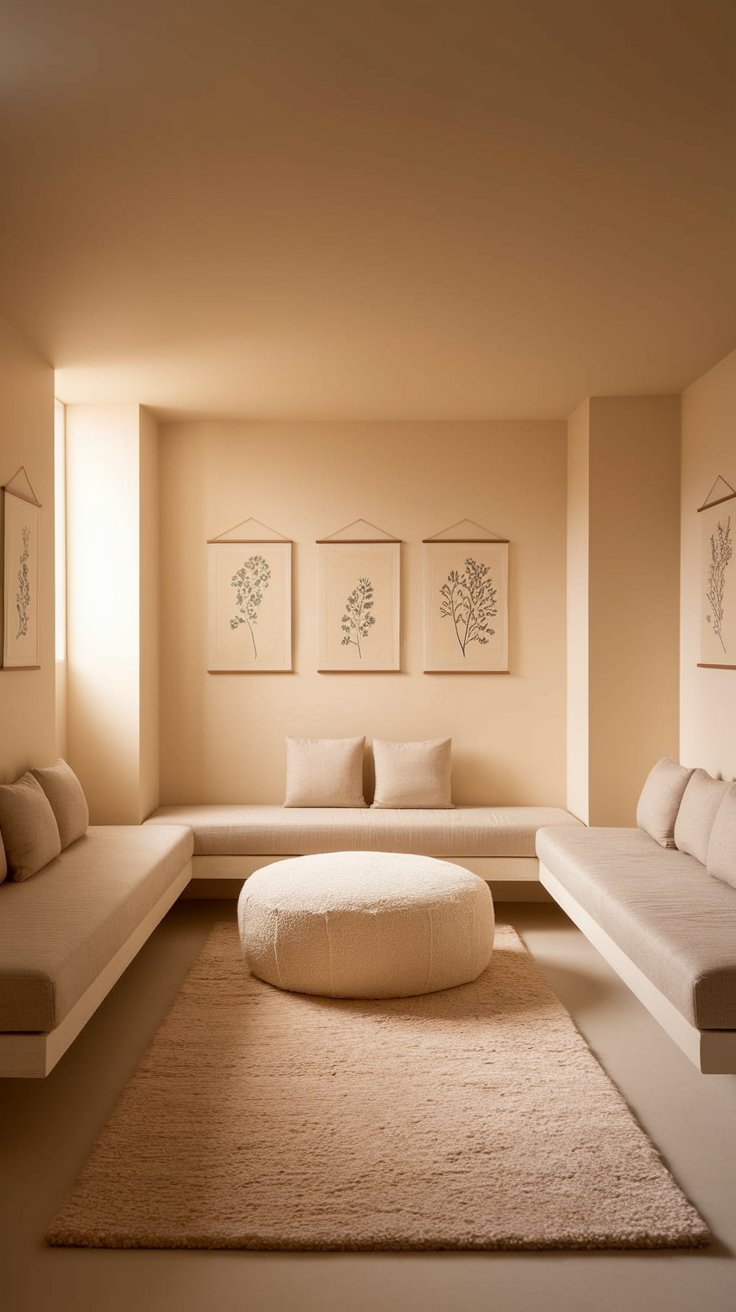
Instead of floating everything in the center, arrange seating around the edges of the room with a large central ottoman or rug anchoring the negative space.
Why you’ll love it
- Opens up the center of the room
- Feels airy and unexpected
- Great for small groups or meditative spaces
4. The Overlap Technique
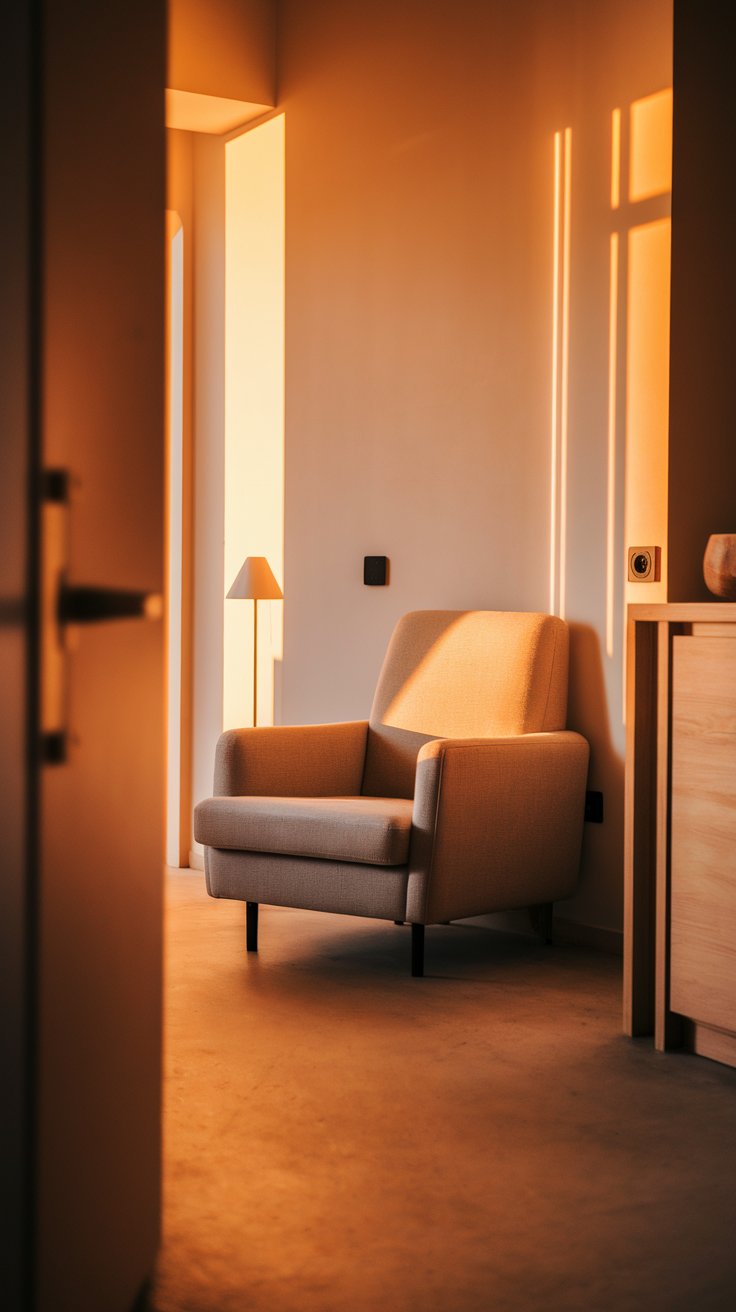
Let furniture pieces intentionally overlap zones, like placing a console table partially under a floating sofa or letting a chair break into a walkway slightly.
Why you’ll love it
- Feels lived-in and layered
- Blurs the “rules” for a more natural flow
- Adds softness to rigid room layouts
5. Corner-Backed Dining Table
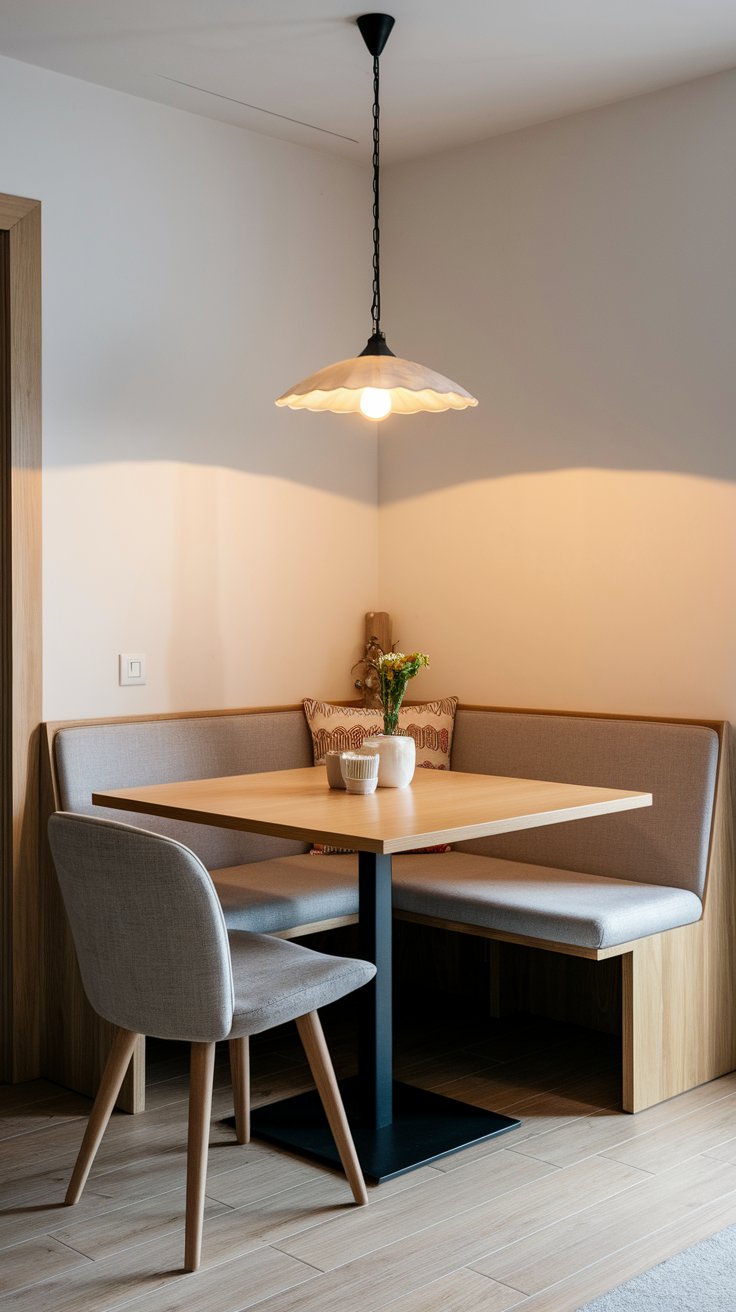
Place a round or square table diagonally in the corner, tucking one chair fully into the corner for an offbeat, cozy setup.
Why you’ll love it
- Makes small kitchens feel dynamic
- Creates intimacy and visual movement
- Adds unexpected asymmetry
6. Diagonal Mirror + Accent Chair Pairing
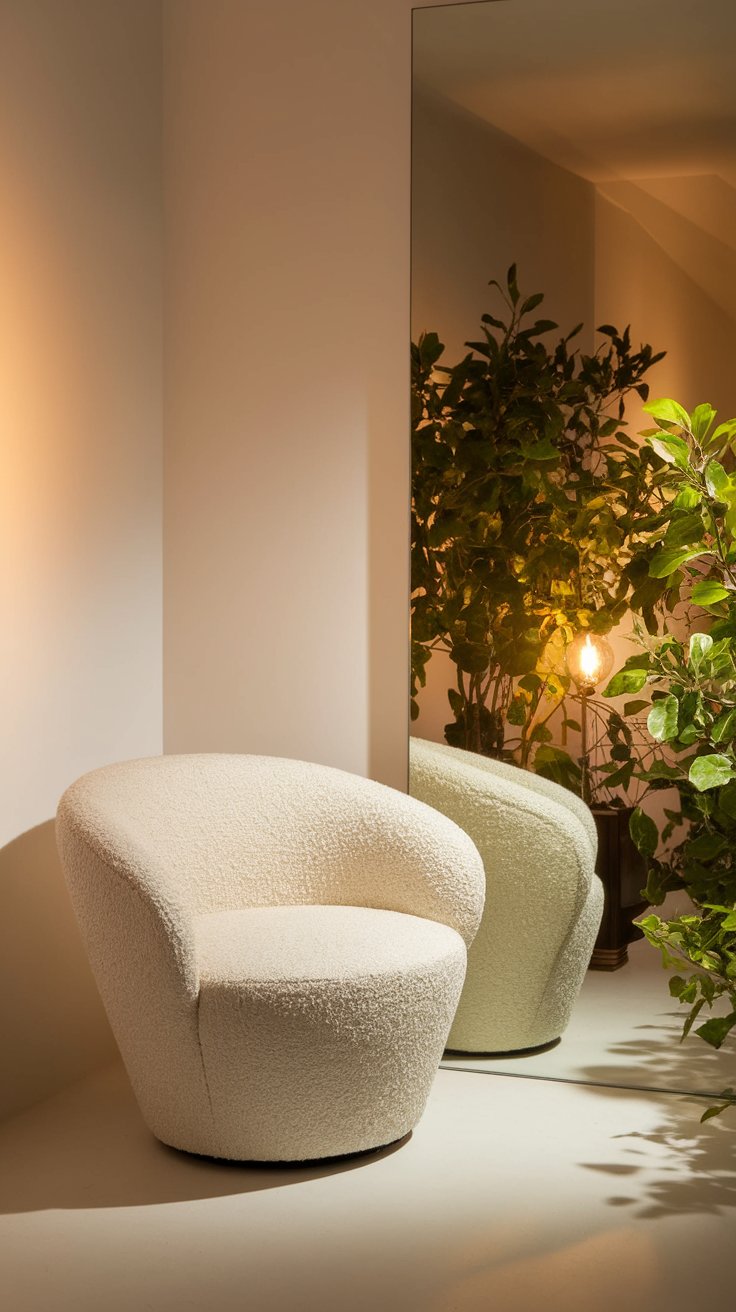
Float an accent chair facing diagonally into a corner and hang a mirror just beside, not behind, it. The reflection expands the space without feeling staged.
Why you’ll love it
- Opens up awkward corners
- Adds flow and natural light
- Perfect for bedrooms or entryways
7. The Off-Center Bed Rule
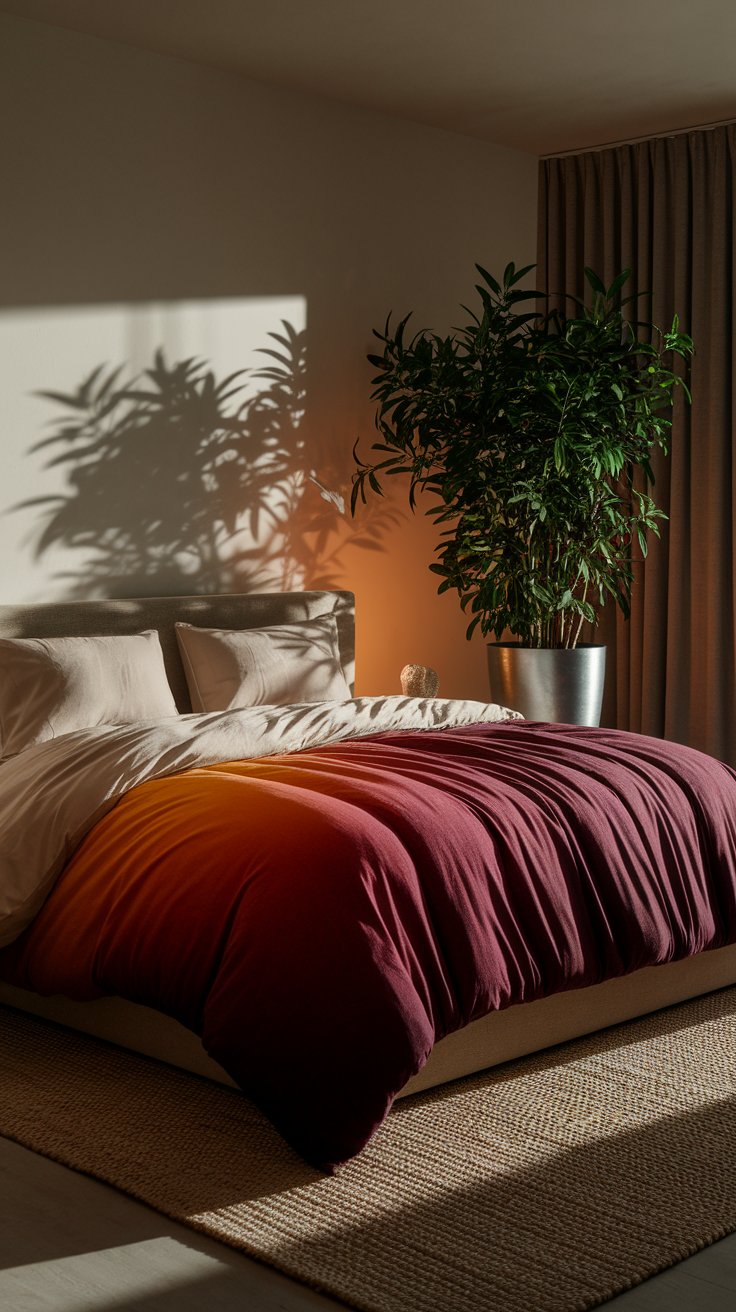
Place the bed intentionally off-center on a wall, then balance it visually with a plant, chair, or low console on the opposite side.
Why you’ll love it
- Breaks symmetry without breaking the space
- Adds character to small bedrooms
- Frees up one side for more movement
8. Multi-Angled Desk Zones
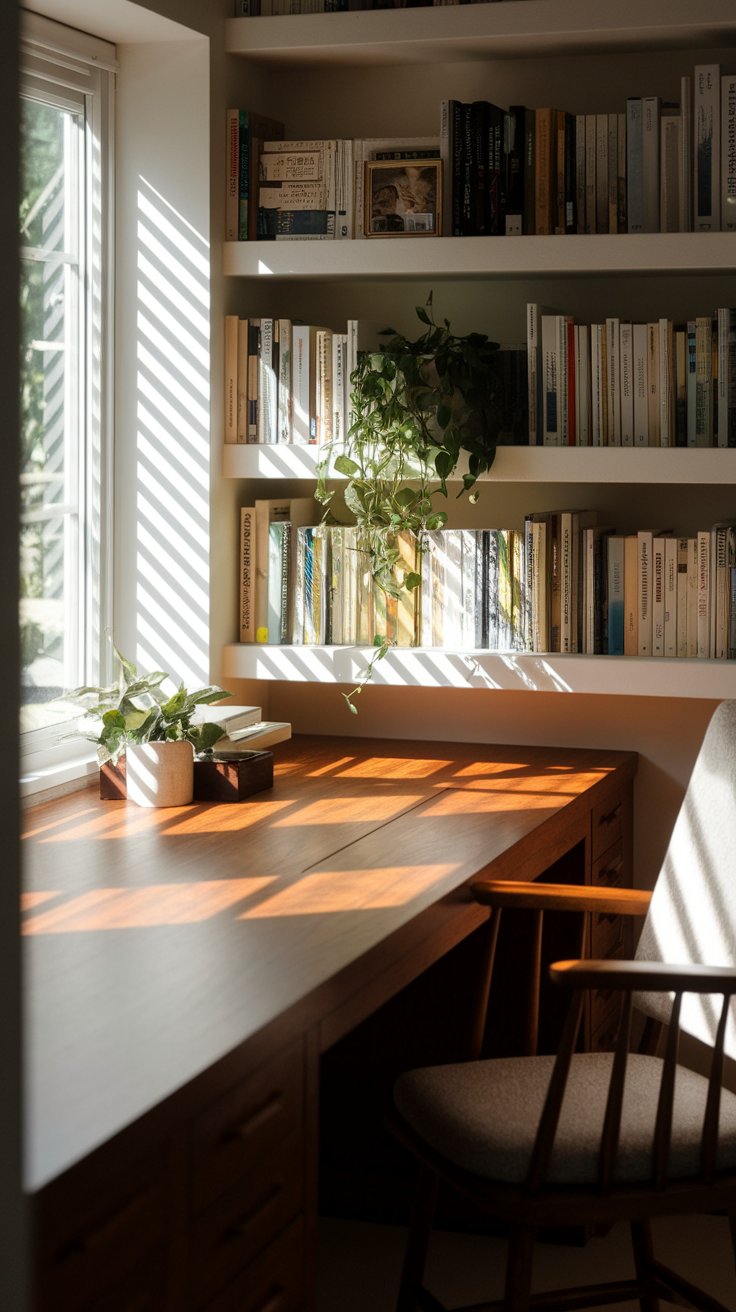
Instead of pushing a desk flat against a wall, angle it outward or into a window corner with space behind for movement or shelving.
Why you’ll love it
- Makes workspaces feel dynamic and creative
- Lets natural light become part of the layout
- Adds energy to “dead” corners
9. Bench-Behind-The-Couch Styling
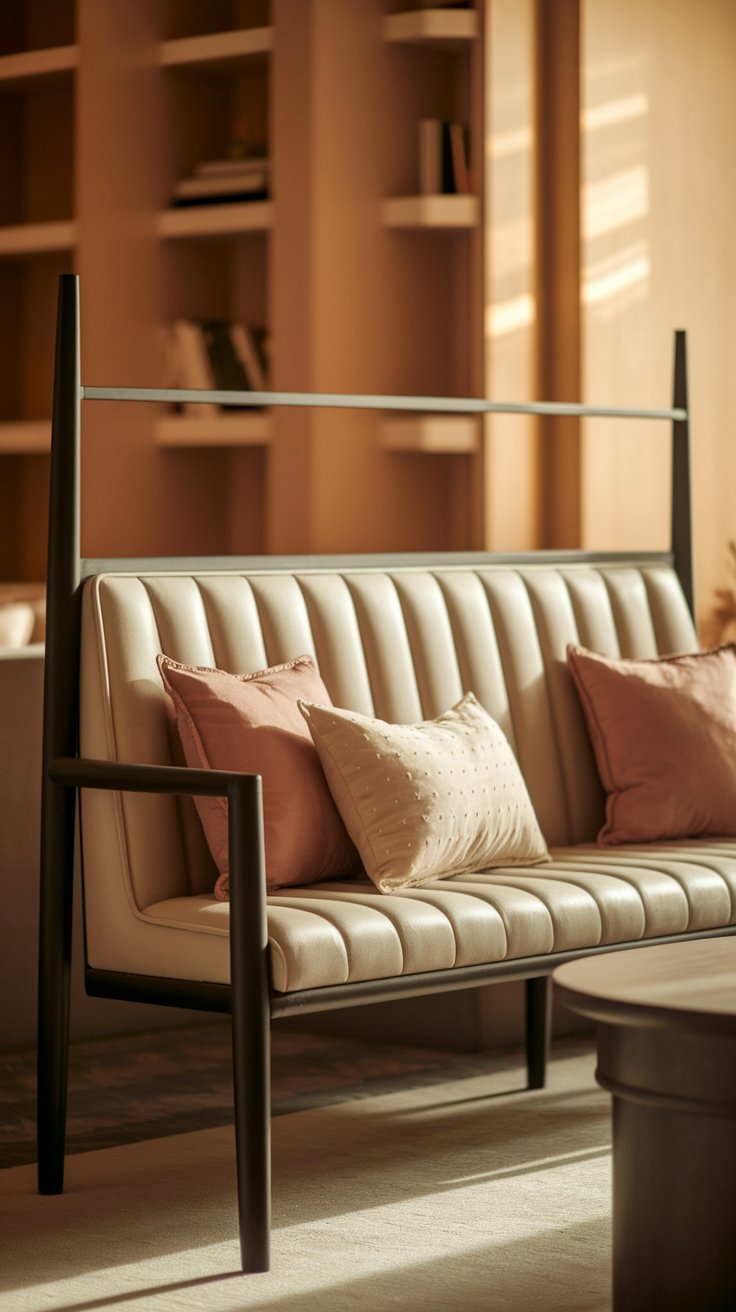
Add a slim bench behind your sofa, not a console table, to act as extra seating, a visual divider, or a styling surface.
Why you’ll love it
- Looks elevated and practical
- Great for small living rooms or studio apartments
- Creates a layered, custom look
10. The Double-Axis Coffee Table Setup
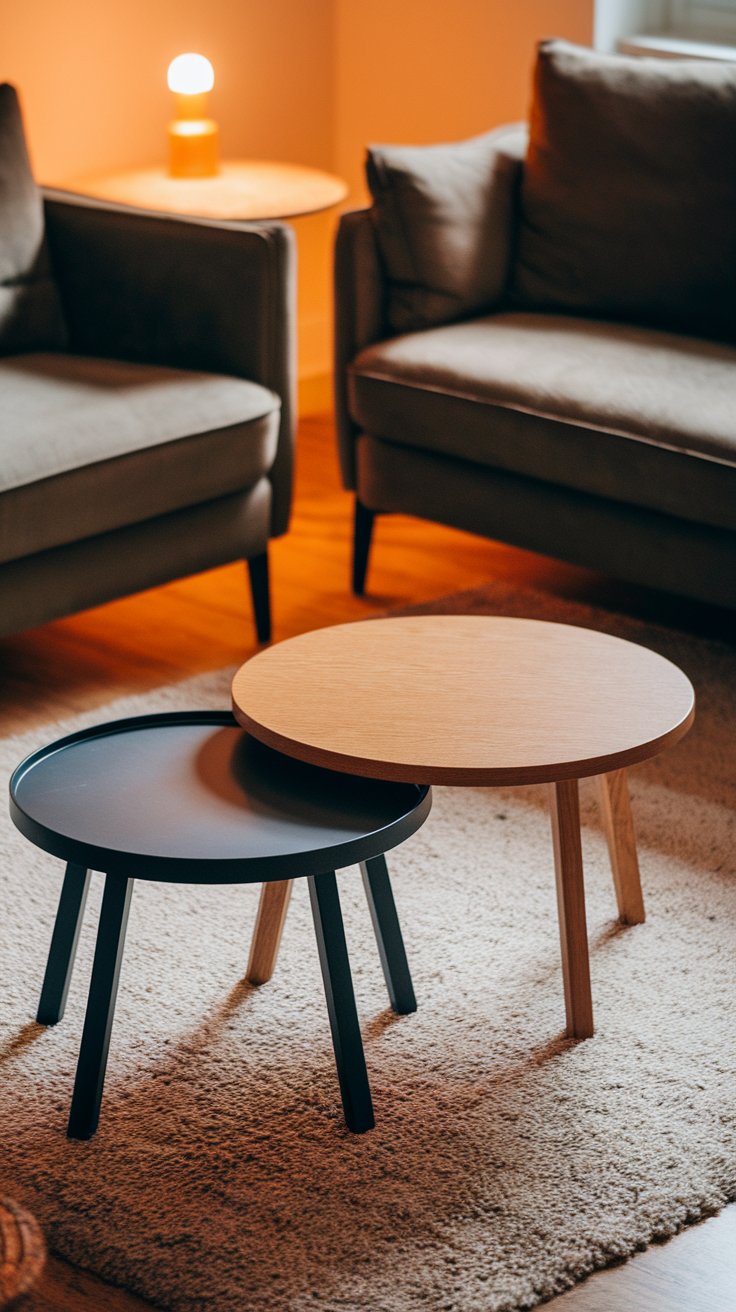
Place two smaller coffee tables at staggered angles instead of one large one. Let one sit low and the other slightly higher for variation.
Why you’ll love it
- Adds movement and texture
- Easier to rearrange for guests or tight spaces
- A designer favorite for gallery-style living rooms
11. Split Seating Around a Shared Center
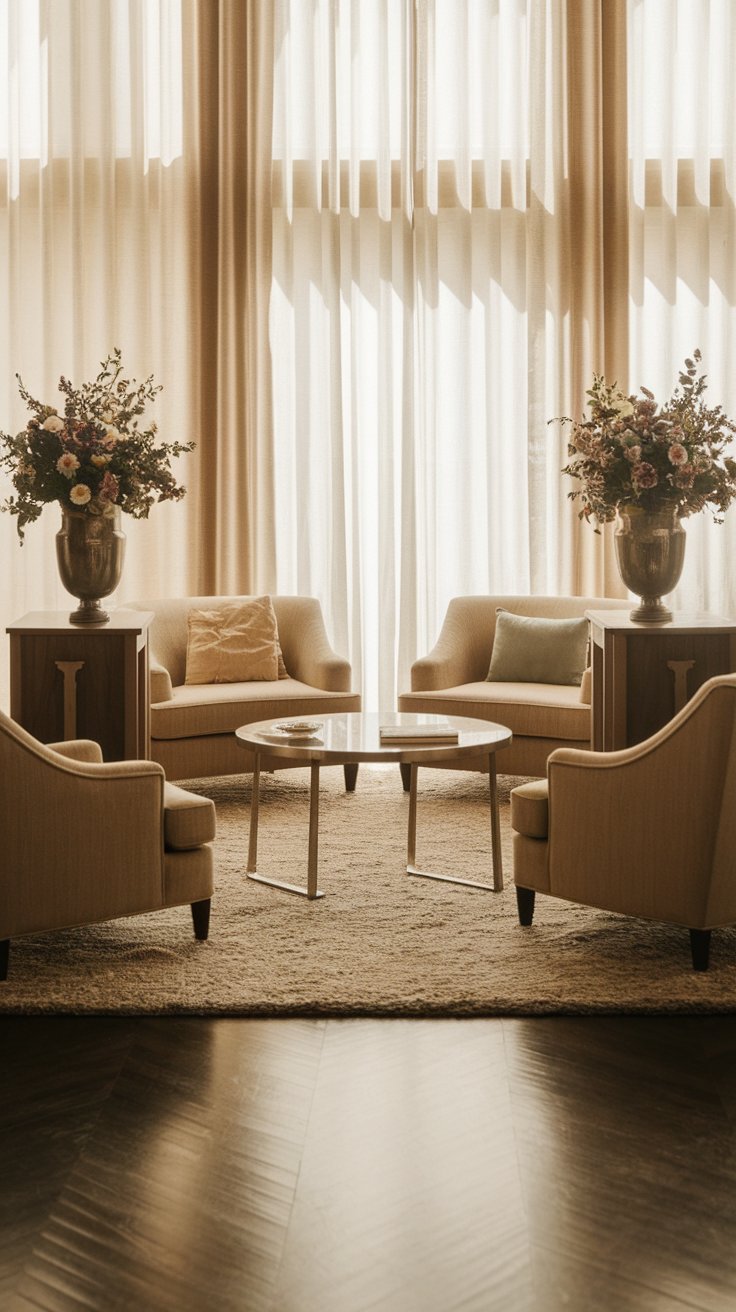
Divide seating into two separate “islands” around a single central rug or coffee table, great for families, reading, or game nights.
Why you’ll love it
- Encourages conversation and flexibility
- Makes large rooms feel more intentional
- Doubles your usable layout zones
12. Back-to-Wall Open Shelf Divider
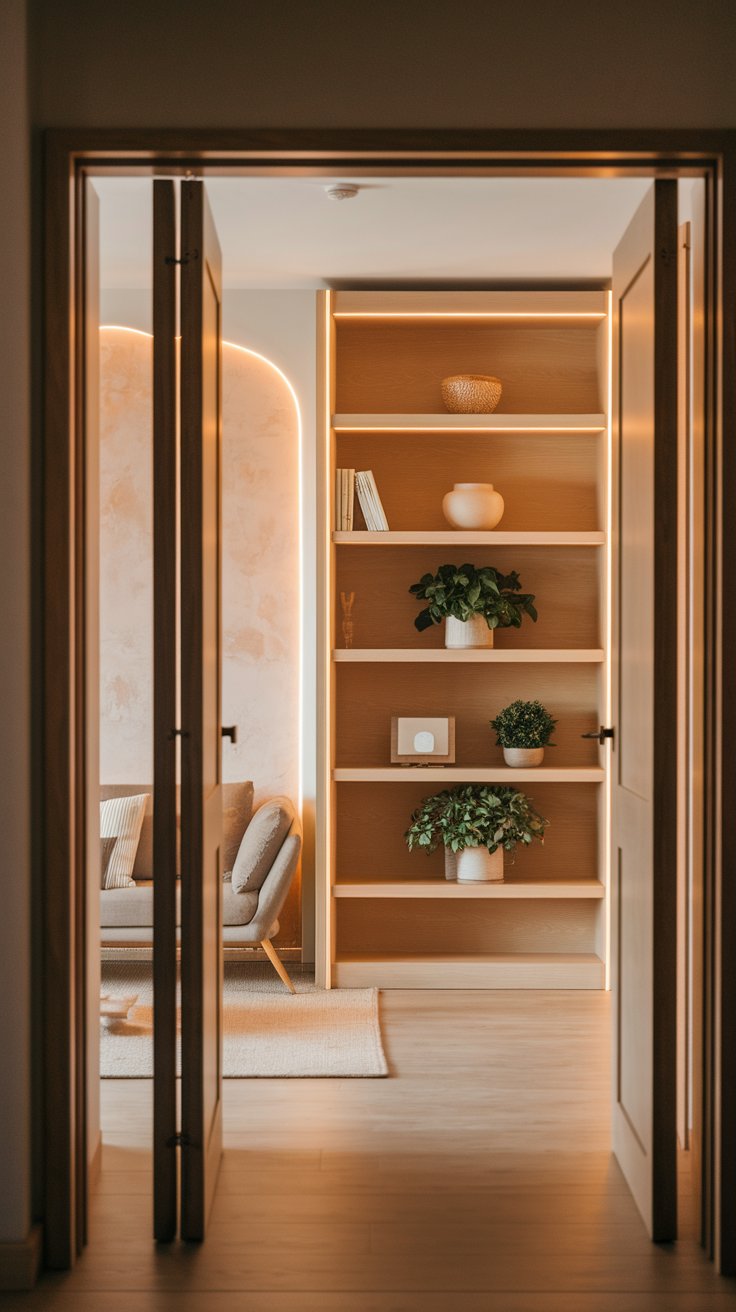
Use an open shelf as a subtle room divider placed with its back against a wall, creating storage and display without floating it.
Why you’ll love it
- Doesn’t block natural light or flow
- Doubles as a visual “stop” without feeling bulky
- Great trick for long rectangular rooms
13. Dual Purpose Entry Strip
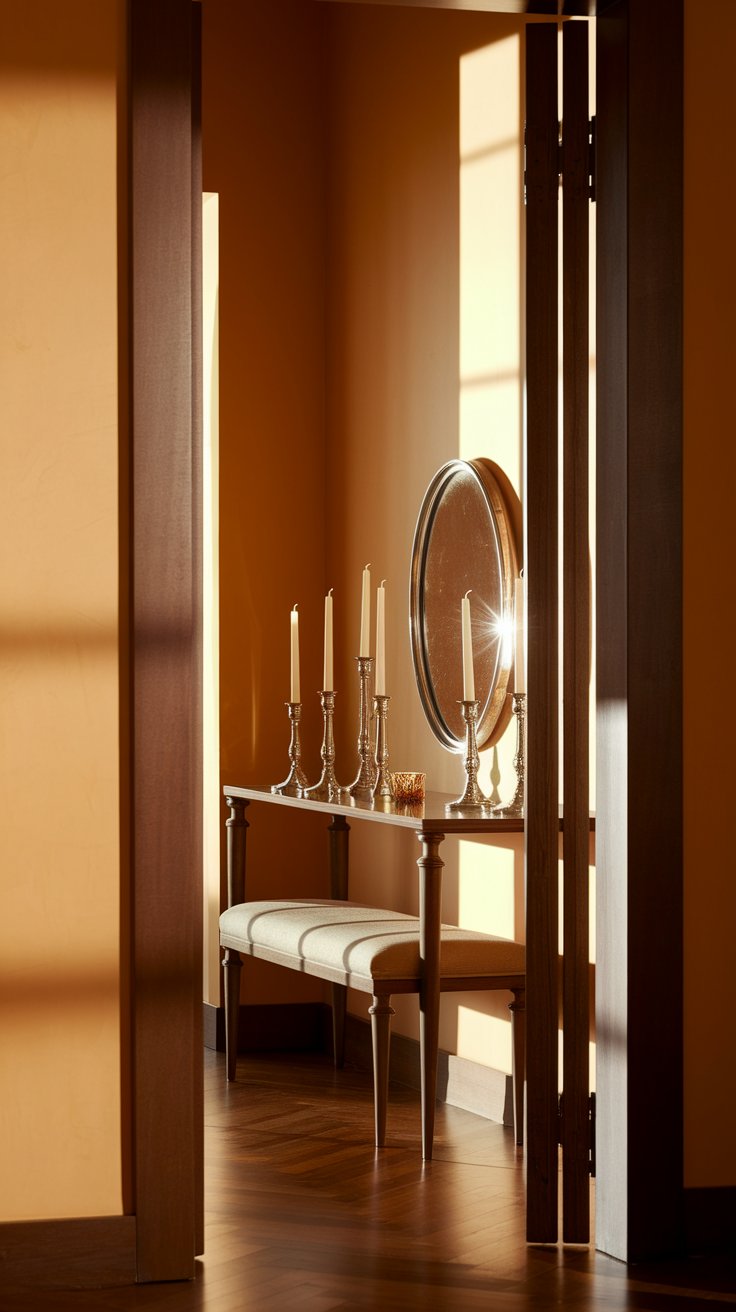
Place a narrow console or bench behind the door zone in an entryway or hallway, but style it like a gallery wall or altar.
Why you’ll love it
- Maximizes those always-ignored walls
- Offers storage, drop zone, and beauty
- Feels intentional instead of filler
14. Frame The Window, Not The Wall
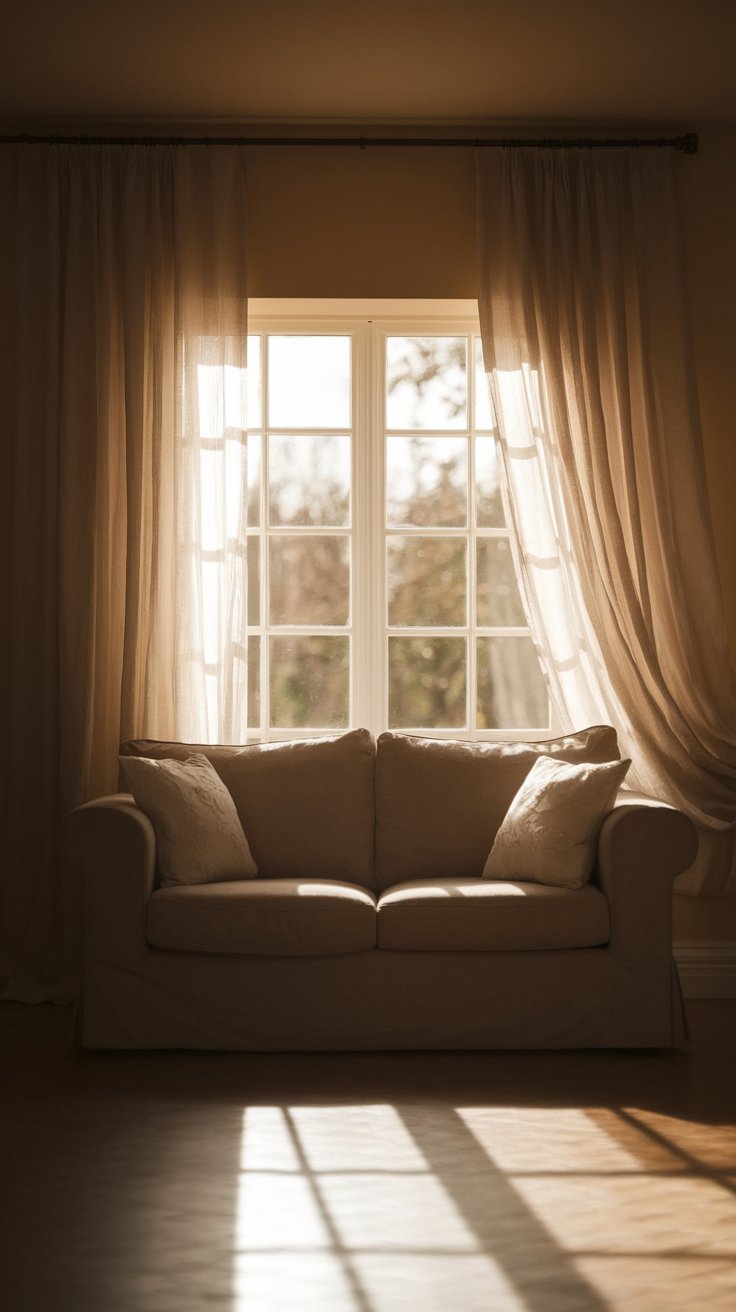
Place your main furniture piece, bed, sofa, or desk, framing the window (centered or slightly off) instead of centering it on a wall.
Why you’ll love it
- Turns the view into the feature
- Feels architectural and balanced
- Great for small or irregular-shaped rooms
15. Offset Reading Spot with Floating Light
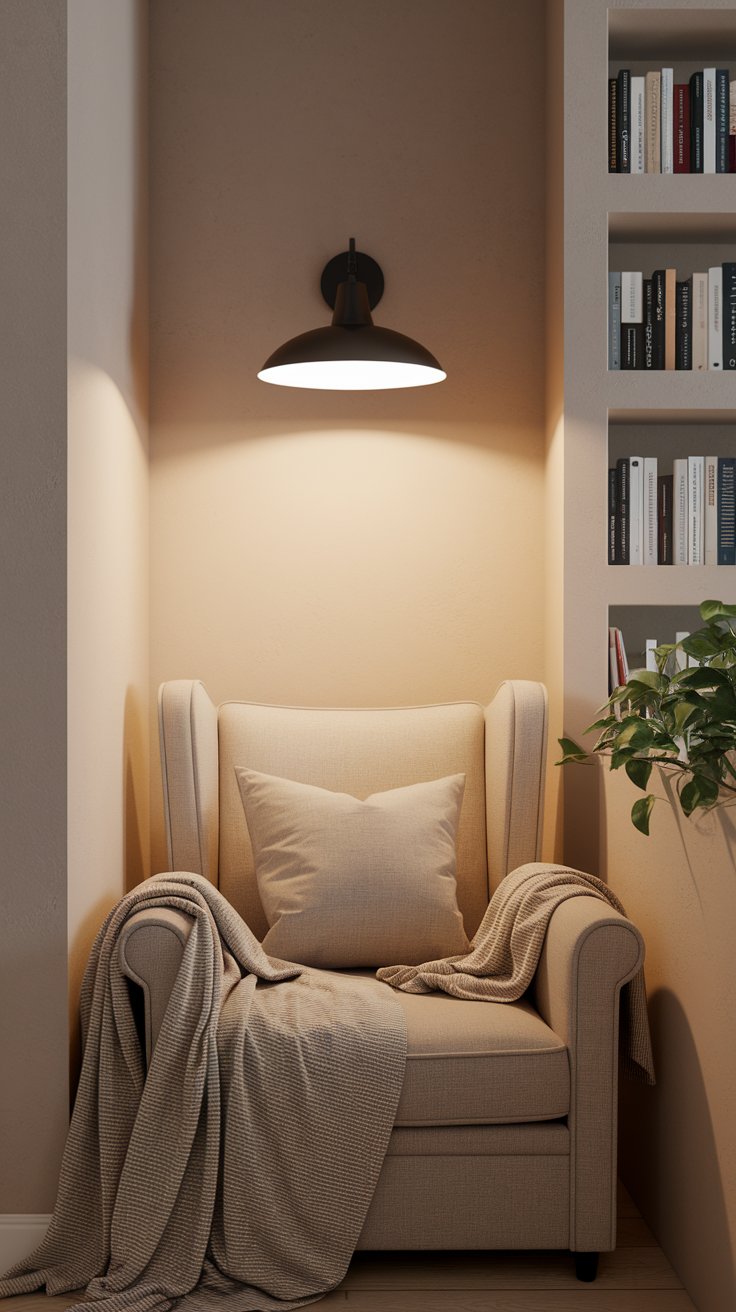
Create a cozy chair nook in a corner or beside a bed, but add a floating wall sconce or pendant in place of a side table.
Why you’ll love it
- Saves floor space
- Feels boutique and styled
- Adds vertical rhythm
16. Split Couch Setup With Walk-Through Path
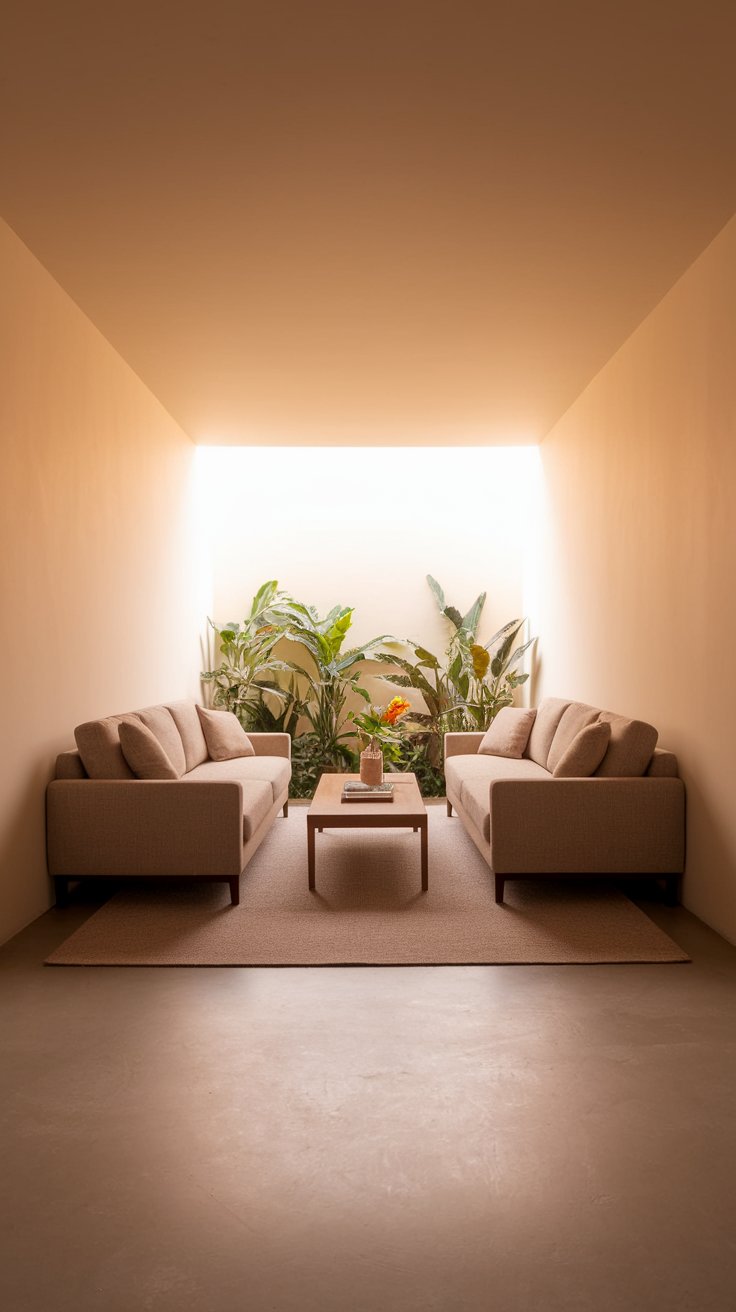
Instead of a sectional, use two matching sofas or loveseats facing each other with space between for foot traffic.
Why you’ll love it
- Keeps the room open and breathable
- Encourages flow without sacrificing comfort
- Ideal for long, narrow rooms
17. Console-Under-Art Instead of TV
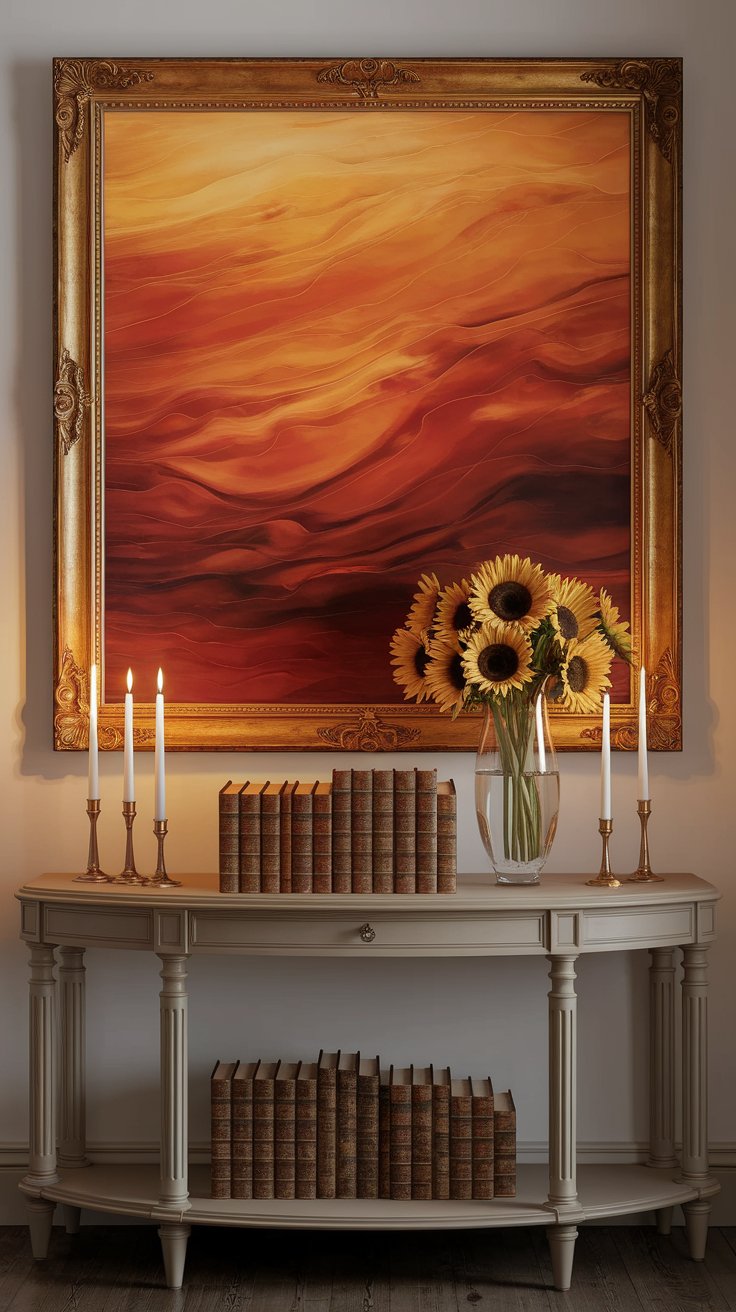
Place a dramatic piece of art on your main wall and style a console table below it, not a screen. Let furniture placement center around this mood instead.
Why you’ll love it
- Feels more curated and peaceful
- Turns your main room into a gallery
- A powerful shift in how the space is used
Final Thoughts
Furniture placement is the one design move that costs nothing but changes everything. Whether you’re working with a tiny room or an open floor plan, these clever layout tricks can shift how your space feels: bigger, warmer, more thoughtful. It’s not about following rules. It’s about creating flow, balance, and moments that just make sense.
Start with one area, experiment, and let your furniture guide how you live, not the other way around.
Frequently Asked Questions
What’s the golden rule for furniture placement?
There’s no one-size-fits-all, but a good rule is to balance visual weight, maintain walkways (at least 2–3 feet wide), and avoid pushing everything against the walls. Focus on how you want the room to feel, not just how it looks.
How do I arrange furniture in a small space?
Float pieces when possible, use multifunctional furniture (like benches or ottomans), and keep walkways clear. Angling furniture or using smaller paired items instead of one bulky piece can also help the space feel more open.
What furniture should be the focal point of a room?
It depends on the function. In a living room, it’s usually the sofa or a feature wall. In a bedroom, the bed. But you can shift that with art, lighting, or layout; sometimes, the placement of a bench, rug, or mirror becomes the quiet star.
Should all furniture be against the wall?
Definitely not. Floating key pieces like sofas, beds, or desks help define space, create better flow, and make rooms feel more balanced. Walls aren’t the only anchors, rugs, light, and objects can guide the layout.
How do I make furniture placement feel intentional?
Use symmetry, balance, and contrast. Try layering rugs under floating pieces, pairing objects in odd numbers, or placing functional items in unexpected spots (like a bench behind a sofa or a chair facing a corner mirror). Every placement should have a purpose, even if it’s just for vibe.
Related Articles:

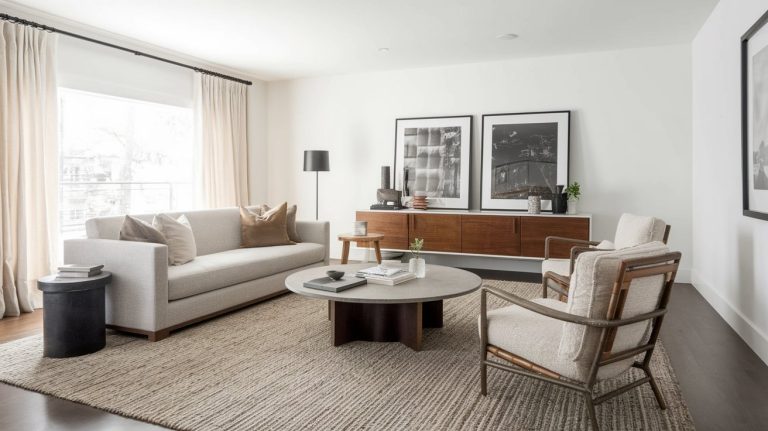
Really useful tips! I especially liked the focus on balance and flow — small changes in placement really do make a big difference.
Home and decor furniture Gallery